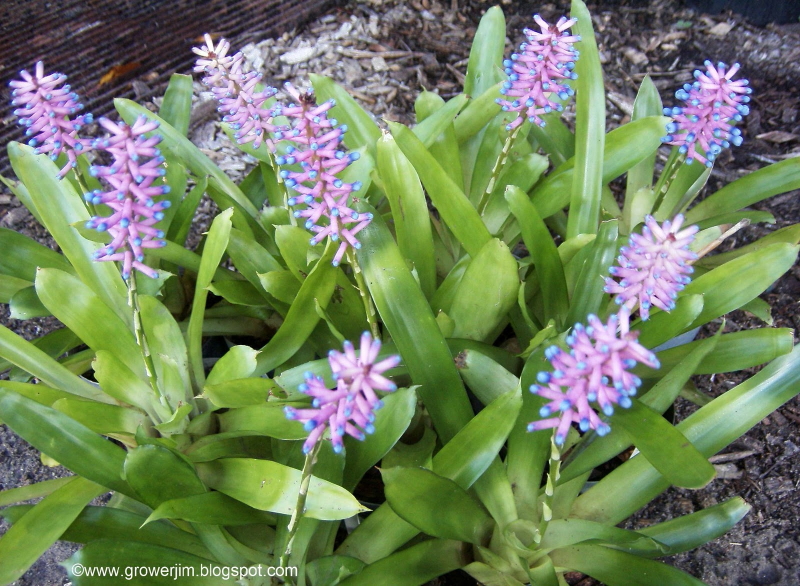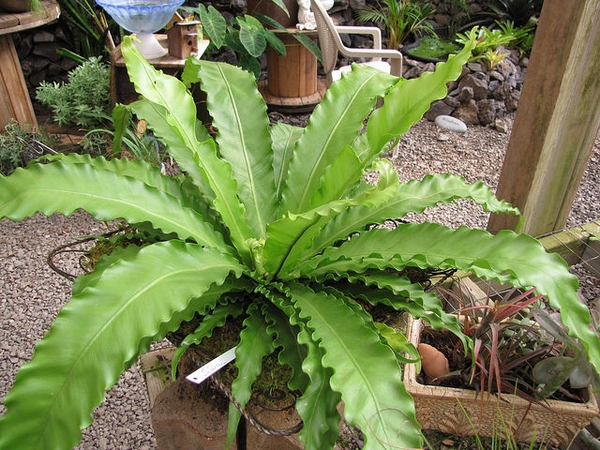Plant List and Guide
Green Friends at the SSL
Curious about which plants reside at the SSL?
Here you can find information about which species of plants are housed in the Science Study Lounge and tips for plants of your own.
A special thank you and awknowledgement to Ethan Rose from UW Milwaukee and to many UWGB faculty and staff who have graciously donated to the plant collection at the SSL.
PROPOGATING PLANTS
Our hope is to grow many of our plants large enough to be propogated by students to be taken home for free. You are welcome to take clippings from plants as long as you talk to an SSL staff member first or email the SSL Coordinator. Please do not propogate immature or small plants.


Candlestick Bromeliad
(Aechmea gamosepela)
Aechmea gamosepela is a bromeliad endemic to southern Brazil. The flowers of this plant turn light blue and purple. When the bloom colors fade, it will begin to turn bright red.
Light: Indirect Light or moderate shade. Do not put in direct sunlight.
Soil: Any soil mix is suitable
Fertilizer: Liquid fertilizer can be used sparingly during the growing season.
Propagation: After the flower bract dies back, cut it off at the base. New plantlets will emerge from the mother plant, which will gradually die back and can be removed at the soil level. These new plantlets can be potted up individually in small pots or left to form a clump of plants. Make sure newly potted bromeliads are well-supported—they have a tendency to fall over as the root systems are weak at first.
https://www.thespruce.com/grow-urn-plants-1902660

Aloe Vera
There are over 300 species of Aloe vera. The gel within the plant can be used for treating burns to making a refreshing drink. Flowers of aloe come in yellow, red, or orange, but it can take years for an indoor aloe to produce a flower stalk.
Light: indirect sunlight
Soil: Prefers a sandy soil mix
Fertilizer: Once a year in the spring is suffcient
Propogation: Remove and pot the offsets that develop at the base of the plant. Break off each offshoot, making sure there are some roots attached to each piece, and replant the offshoots separately
Image: Michael Marquand
https://www.thespruce.com/grow-aloe-vera-1403153

Bird's Nest Fern
(Asplenium nidus)
Native to Hawaii and the Pacific Basin, this plant is found in rain forests in soils or on the branches of trees. This plant can be described as epiphytic, meaning it can grow on another plant (but is not parasitic).
Light: Filtered sunlight or moderate shade. Do not expose to direct sunlight.
Soil: loose soil rich in organic matter. Needs good drainiage and high humidity.
Fertilizer: once a month only in growing season applied directly to the soil.
Propogation: Propagation occurs via spores, which look like fuzzy brown spots on the undersides of fronds. When they look especially plump and fuzzy, that's when it's time to propagate.
To collect the spores, cut off a frond with these spots and place it in a paper bag for a few days. The spores will drop into the bag. Next, add the spores on top of a container of sphagnum moss that’s placed in a water dish, so the moss will soak up the water. The moss should be moist throughout but not waterlogged. Cover the container with plastic wrap to keep the environment moist, and place it in a warm, shaded spot. Keep the dish filled with water, and mist the moss if it doesn't feel moist. Germination should occur in a few weeks.
Image: NCSU Extension
https://www.thespruce.com/grow-asplenium-nidus-ferns-1902716